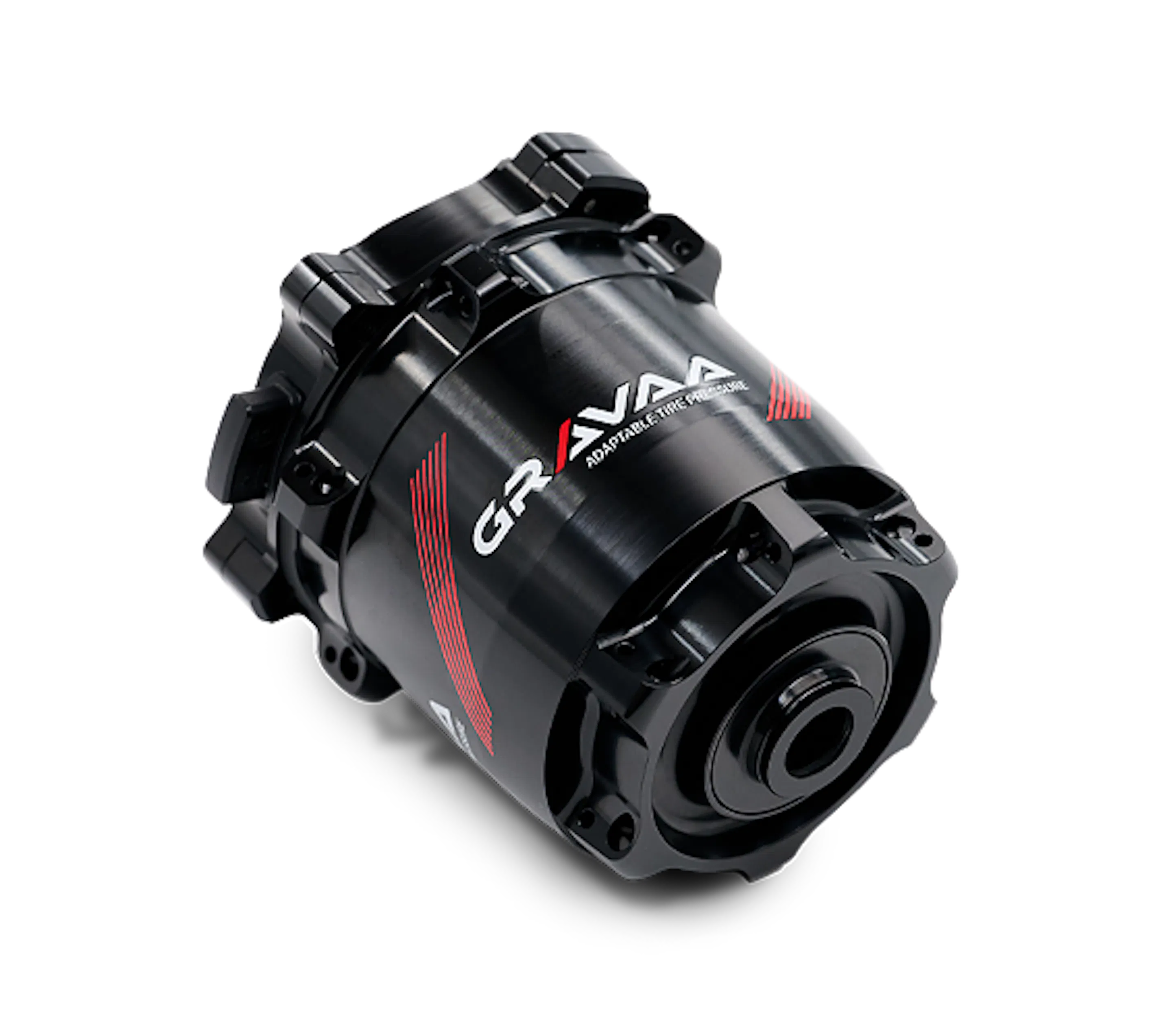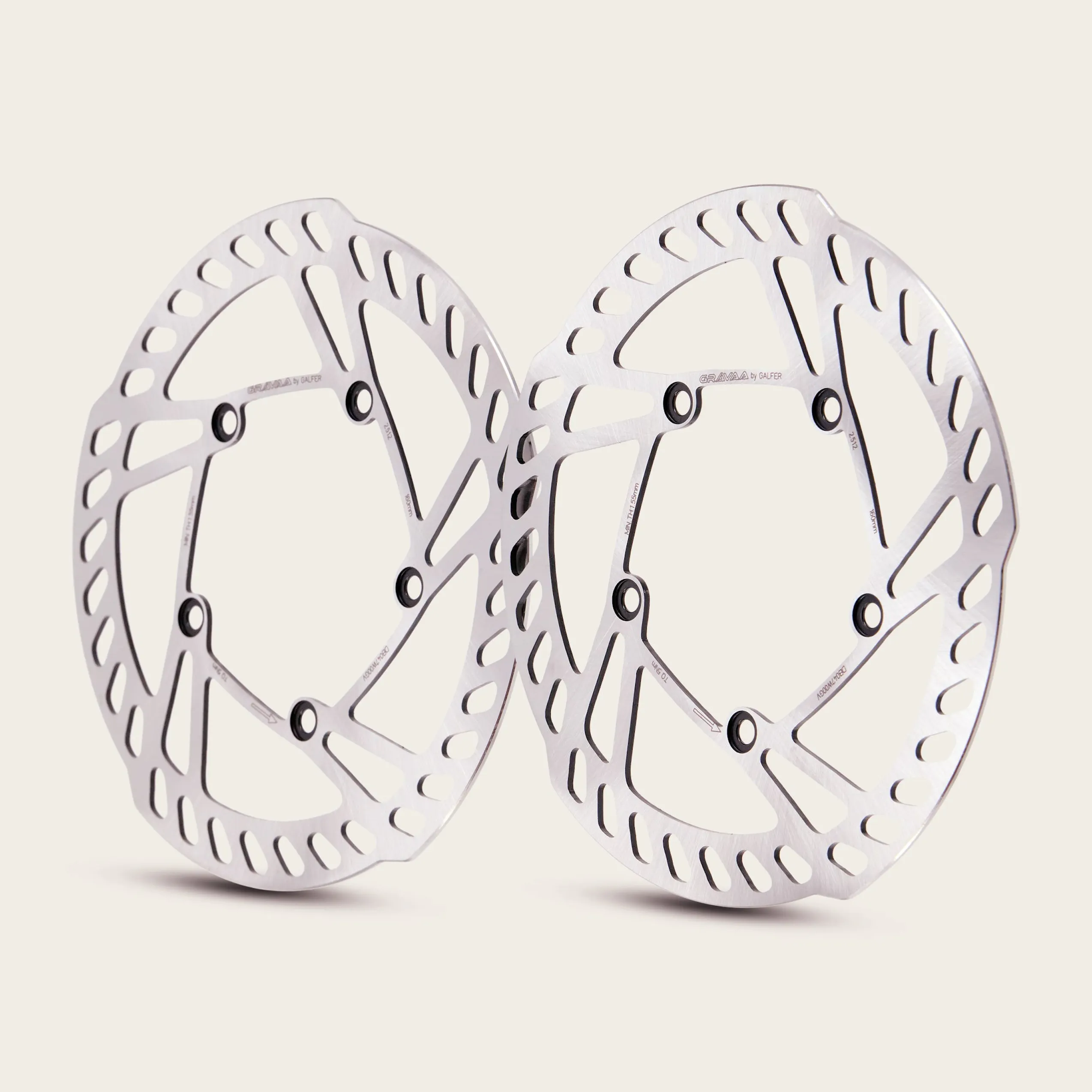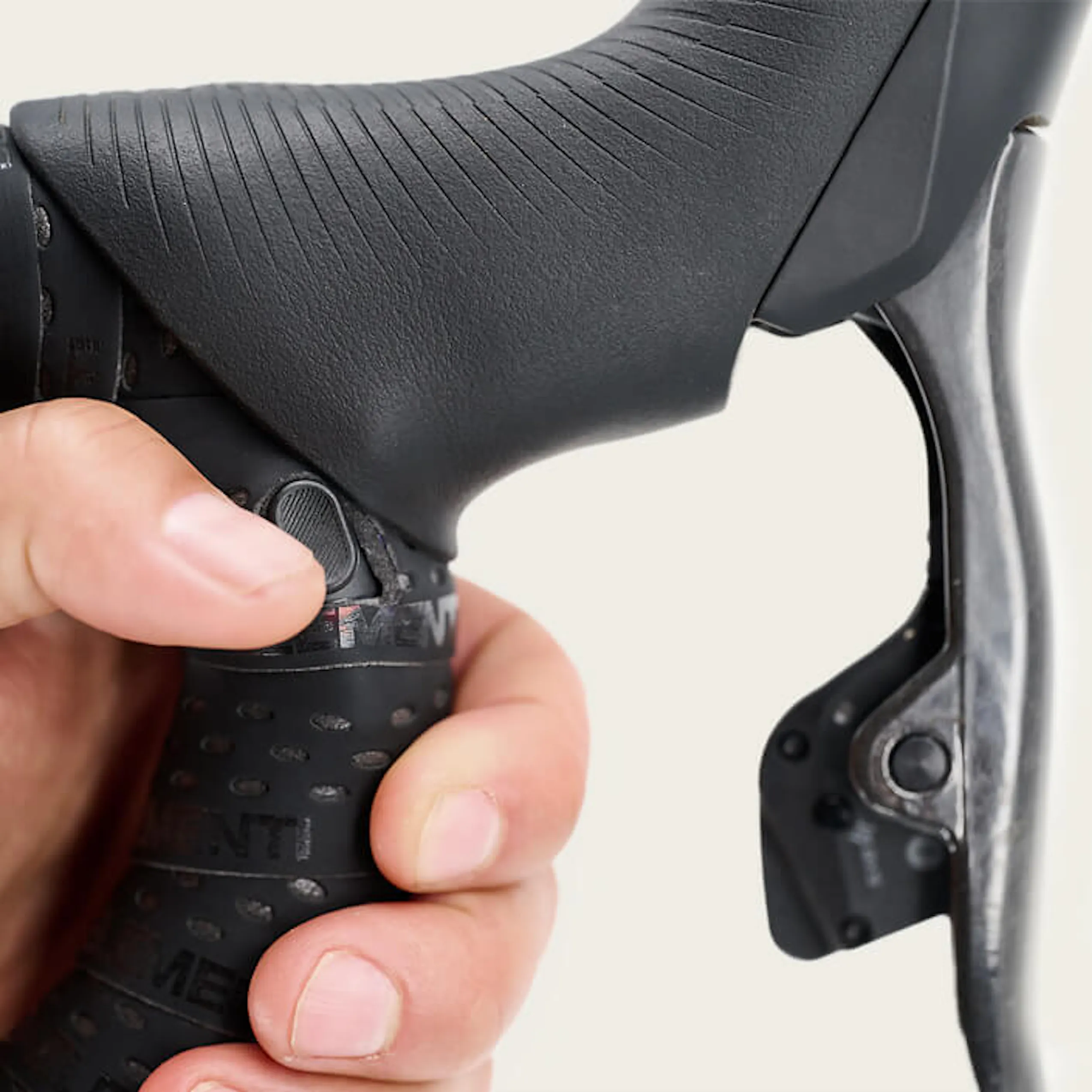
Gravaa is incredibly easy to use, intuitive and kind of miraculous. It’s also fun. And when did you last say that about your wheels? But behind the Gravaa logo lies a world of design and engineering. Here’s what’s inside and what everything does.

From Holland, With Hubs
The hubs are the heart of Gravaa. They’re just like regular bike hubs right until they start adapting your tire pressure. And then they’re a work of art. The system consists of a front hub, a rear, a hose that runs from the hubs to the rim of each wheel, cockpit controls for manual command and a wireless connection to your bike computer and the Gravaa app on your phone.
From Holland, With Hubs
The hubs are the heart of Gravaa. They’re just like regular bike hubs right until they start adapting your tire pressure. And then they’re a work of art. The system consists of a front hub, a rear, a hose that runs from the hubs to the rim of each wheel, cockpit controls for manual command and a wireless connection to your bike computer and the Gravaa app on your phone.

Up the Pressure
When you or the system decide to up your tire pressure, an actuator-enabled clutch mechanism in the hub connects a camshaft to your axle inside the hub. That stops the camshaft spinning, while the rotation of your wheels start a tiny pump working by moving its pistons up and down.
The pressurized air is guided via a hose connected to a spoke, filling your tire with air.
Up the Pressure
When you or the system decide to up your tire pressure, an actuator-enabled clutch mechanism in the hub connects a camshaft to your axle inside the hub. That stops the camshaft spinning, while the rotation of your wheels start a tiny pump working by moving its pistons up and down.
The pressurized air is guided via a hose connected to a spoke, filling your tire with air.

Tiny Pump, Big Ambition
Inside each hub is a miniature membrane pump consisting of three cylinders. The pump is highly efficient. Like everything in the Gravaa hubs, we designed and made the pump. It took years of development and millions of cups of coffee to perfect. The pump uses air which comes in via the atmosphere and which gets compressed in steps, increasing the pressure of the air to the desired pressure inside your tire.
Tiny Pump, Big Ambition
Inside each hub is a miniature membrane pump consisting of three cylinders. The pump is highly efficient. Like everything in the Gravaa hubs, we designed and made the pump. It took years of development and millions of cups of coffee to perfect. The pump uses air which comes in via the atmosphere and which gets compressed in steps, increasing the pressure of the air to the desired pressure inside your tire.

Stop the Pressure
So far, we’ve seen how Gravaa increases your tire pressure. But what goes up must come to a stop, and that’s where the actuator does its thing, telling the clutch to disengage, allowing the camshaft to spin freely once again, deactivating the pump and ending the inflation of your tires.
Stop the Pressure
So far, we’ve seen how Gravaa increases your tire pressure. But what goes up must come to a stop, and that’s where the actuator does its thing, telling the clutch to disengage, allowing the camshaft to spin freely once again, deactivating the pump and ending the inflation of your tires.

Drop the Pressure
Reducing your tire pressure (either automatically by Gravaa or via the cockpit controls) can be done very quickly, thanks to a specifically designed valve inside the hubs: the so-called booster valve, which expels air quickly enough to ensure rapid deflation. When pressure is sufficiently reduced, Gravaa closes the valve. On-board pressure sensors continuously monitor the pressure in the tire, such that inflation and deflation can always be controlled automatically.
Drop the Pressure
Reducing your tire pressure (either automatically by Gravaa or via the cockpit controls) can be done very quickly, thanks to a specifically designed valve inside the hubs: the so-called booster valve, which expels air quickly enough to ensure rapid deflation. When pressure is sufficiently reduced, Gravaa closes the valve. On-board pressure sensors continuously monitor the pressure in the tire, such that inflation and deflation can always be controlled automatically.

Where’s the Air?
If all the action is in the hub, how does Gravaa get the air to your tires or deflate them? For that, we look to the hose and a hard-wired connection between the hub and your tire. The connection to the tire is made by the Gravaa valve adapter, which can be fitted easily on a normal Presta valve stem (with the Presta core removed).
Where’s the Air?
If all the action is in the hub, how does Gravaa get the air to your tires or deflate them? For that, we look to the hose and a hard-wired connection between the hub and your tire. The connection to the tire is made by the Gravaa valve adapter, which can be fitted easily on a normal Presta valve stem (with the Presta core removed).

Small Volts
Despite the mechanical nature of what Gravaa does, it also naturally houses some onboard electronics. These electronics, from the pressure sensors to the Bluetooth/ANT+ connection to your bike computer, cockpit controls and smartphone, require a small amount of power and that comes from an onboard, rechargeable battery that resides inside each hub.
Small Volts
Despite the mechanical nature of what Gravaa does, it also naturally houses some onboard electronics. These electronics, from the pressure sensors to the Bluetooth/ANT+ connection to your bike computer, cockpit controls and smartphone, require a small amount of power and that comes from an onboard, rechargeable battery that resides inside each hub.

Spinning Wheels
In normal use, you can enjoy up to 40 active riding hours on a single charge. You’ll know the batteries are running low via an indication the Gravaa app on your smartphone or the built-in LED on the side of each hub. Gravaa ships with a charging cable with a handy magnetic connector to recharge the batteries.
This cable has a USB-A plug for charging via a USB charger.
Spinning Wheels
In normal use, you can enjoy up to 40 active riding hours on a single charge. You’ll know the batteries are running low via an indication the Gravaa app on your smartphone or the built-in LED on the side of each hub. Gravaa ships with a charging cable with a handy magnetic connector to recharge the batteries.
This cable has a USB-A plug for charging via a USB charger.

Rims from Reserve and DT Swiss
Gravaa meets the ground thanks to our rim partners at DT Swiss and Reserve. Both brands deliver the same spirit of innovation, flawless manufacturing and eternal curiosity that powers Gravaa and the work of our team.
Rims from Reserve and DT Swiss
Gravaa meets the ground thanks to our rim partners at DT Swiss and Reserve. Both brands deliver the same spirit of innovation, flawless manufacturing and eternal curiosity that powers Gravaa and the work of our team.

Freehubs from DT Swiss
Whether you choose to ride SRAM, Shimano or Campagnolo, there's a Gravaa wheelset for your bike. Powered by the tech and proven reliability of DT Swiss, Gravaa is compatible with the groupset you're using.
Freehubs from DT Swiss
Whether you choose to ride SRAM, Shimano or Campagnolo, there's a Gravaa wheelset for your bike. Powered by the tech and proven reliability of DT Swiss, Gravaa is compatible with the groupset you're using.

Rotors from Galfer
Gravaa is only a little bigger than a standard hub despite what's inside. But to find a rotor to meet our needs and Gravaa's silhouette, we turned to our friends at Galfer, who created a unique 5-bolt interface. The rotor comes with every Gravaa wheelset.
Rotors from Galfer
Gravaa is only a little bigger than a standard hub despite what's inside. But to find a rotor to meet our needs and Gravaa's silhouette, we turned to our friends at Galfer, who created a unique 5-bolt interface. The rotor comes with every Gravaa wheelset.

Remote control from Classified
Thanks to Gravaa’s easy-reach controls, changing your tire pressure is as simple as pushing two switches on your cockpit. Supplied by our partner Classified and connected via cables to a wireless receiver/transceiver unit installed inside your drop bars, Gravaa’s Sprint Shifter controls allow instantaneous pressure adjustment. A ring shifter version for flat bars will soon be available as well.
Remote control from Classified
Thanks to Gravaa’s easy-reach controls, changing your tire pressure is as simple as pushing two switches on your cockpit. Supplied by our partner Classified and connected via cables to a wireless receiver/transceiver unit installed inside your drop bars, Gravaa’s Sprint Shifter controls allow instantaneous pressure adjustment. A ring shifter version for flat bars will soon be available as well.

The Gravaa App
From initial setup to ongoing information, settings and more, the Gravaa smartphone app is your hub for everything related to your Gravaa wheels.
The Gravaa App
From initial setup to ongoing information, settings and more, the Gravaa smartphone app is your hub for everything related to your Gravaa wheels.

See Your Pressure on Screen
Gravaa’s wireless connection to your bike computer allows you to see your current tire pressure at a glance, helping you gauge whether to inflate or deflate your tires as the terrain changes.
See Your Pressure on Screen
Gravaa’s wireless connection to your bike computer allows you to see your current tire pressure at a glance, helping you gauge whether to inflate or deflate your tires as the terrain changes.



